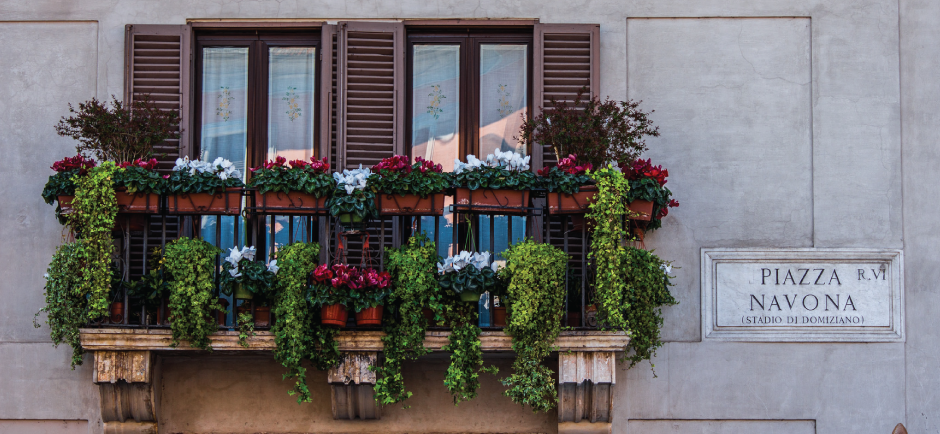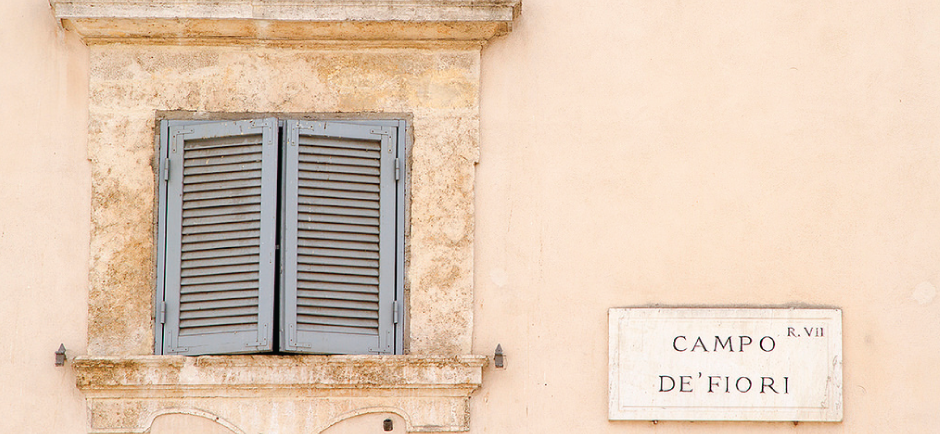Project Description
Choosing where to stay in Rome depends mainly on your personal interests and on your budget.
If it’s your first visit then the best place to choose is probably the historical centre of the city.
You can then walk to most of the attractions and there are also many bars, restaurants and shops. It is the most touristy area, the best to shop in but also usually the most expensive.
The historical centre is divided into “rioni” (districts). This name has been used since the Middle Ages to indicate the historical parts of the centre of Rome.
Here you can find brief descriptions of the main districts with their main characteristics.
 The Campitelli district is characterized by its museums and archeological sites. It hosts the majority of Rome’s marvels such as the Colosseum, the Roman Forum and the Palatine. If you want to see Rome’s antique ruins and the majestic buildings that you have often seen on postcards in person, then this is the place to come.
The Campitelli district is characterized by its museums and archeological sites. It hosts the majority of Rome’s marvels such as the Colosseum, the Roman Forum and the Palatine. If you want to see Rome’s antique ruins and the majestic buildings that you have often seen on postcards in person, then this is the place to come.
 The Celio district is south east of the Colosseum and is less frequented by tourists. You can’t find trendy bars, pubs, etc, or fashionable shops here, but it is very liveable and offers gay friendly bars and economical shops.
The Celio district is south east of the Colosseum and is less frequented by tourists. You can’t find trendy bars, pubs, etc, or fashionable shops here, but it is very liveable and offers gay friendly bars and economical shops.
 The Trevi and Campo Marzio districts are invaded every day by thousands of tourists who visit their characteristic streets and squares. The little shops around the Trevi Fountain mainly sell souvenirs, the restaurants are too ‘touristy’ and the crowd of people never ends. The area around Piazza di Spagna is more upmarket but you can still find more affordable solutions. This is the place to go if you want to visit the fashion boutiques belonging to the most prestigious Italian and international designers.
The Trevi and Campo Marzio districts are invaded every day by thousands of tourists who visit their characteristic streets and squares. The little shops around the Trevi Fountain mainly sell souvenirs, the restaurants are too ‘touristy’ and the crowd of people never ends. The area around Piazza di Spagna is more upmarket but you can still find more affordable solutions. This is the place to go if you want to visit the fashion boutiques belonging to the most prestigious Italian and international designers.
 The Monti district is a little world of its own, the commercial activities have not been transformed into tourist traps, but instead have kept their very independent character, thanks to which today it is considered one of the most vivacious and stimulating areas of Rome. A district with a bohemian soul where you can find interesting artisan shops and clubs, pubs, bars etc., for the lovers of nightlife.
The Monti district is a little world of its own, the commercial activities have not been transformed into tourist traps, but instead have kept their very independent character, thanks to which today it is considered one of the most vivacious and stimulating areas of Rome. A district with a bohemian soul where you can find interesting artisan shops and clubs, pubs, bars etc., for the lovers of nightlife.
 The Parione and Regola districts are among the trendiest neighbourhoods in Rome, so they are usually a bit too expensive to stay in. The most famous and enchanting square is Piazza Navona, surrounded by restaurants and bar. Campo de’ Fiori, instead, is the area where you can find most of the nightlife, frequented mainly by the young, but it can get a bit too noisy in the evening.
The Parione and Regola districts are among the trendiest neighbourhoods in Rome, so they are usually a bit too expensive to stay in. The most famous and enchanting square is Piazza Navona, surrounded by restaurants and bar. Campo de’ Fiori, instead, is the area where you can find most of the nightlife, frequented mainly by the young, but it can get a bit too noisy in the evening.
 The Pigna and Sant’Eustachio districts have a lot to offer; they are a very pleasing part of Rome, also appreciated by the Romans who love to eat in the restaurants here, go shopping or go for a walk along the Via del Corso, which is just a few steps away. The symbol of this area is the Pantheon. Thanks to the special atmosphere that you can breathe in here, this area is on average quite expensive, but adorable.
The Pigna and Sant’Eustachio districts have a lot to offer; they are a very pleasing part of Rome, also appreciated by the Romans who love to eat in the restaurants here, go shopping or go for a walk along the Via del Corso, which is just a few steps away. The symbol of this area is the Pantheon. Thanks to the special atmosphere that you can breathe in here, this area is on average quite expensive, but adorable.
 The Ludovisi district, with its Art Nouveau-styled buildings, is situated between Via Veneto and the surrounding streets. This area was home to the ‘Dolce Vita’ and paparazzi era of the ‘60s. Today it is characterized by the presence of luxury hotels and embassies. North of here, you can find the beautiful Borghese Park, while if you go south, you can visit Piazza Barberini.
The Ludovisi district, with its Art Nouveau-styled buildings, is situated between Via Veneto and the surrounding streets. This area was home to the ‘Dolce Vita’ and paparazzi era of the ‘60s. Today it is characterized by the presence of luxury hotels and embassies. North of here, you can find the beautiful Borghese Park, while if you go south, you can visit Piazza Barberini.
 The Trastevere district is one of the most characteristic areas of Rome, as well as being the centre of Roman nightlife. There are many trattorias, which are always open, and numerous pubs and bars. Charming by day, busy at night.
The Trastevere district is one of the most characteristic areas of Rome, as well as being the centre of Roman nightlife. There are many trattorias, which are always open, and numerous pubs and bars. Charming by day, busy at night.
 The Sant’Angelo and Ripa districts are those of the ancient Roman ghetto, where the Jewish community was enclosed. It is a beautiful area to visit, full of marvellous corners and niches, where you can find excellent restaurants which serve traditional kosher or Roman dishes.
The Sant’Angelo and Ripa districts are those of the ancient Roman ghetto, where the Jewish community was enclosed. It is a beautiful area to visit, full of marvellous corners and niches, where you can find excellent restaurants which serve traditional kosher or Roman dishes.
 The Borgo and Prati districts ideally include the Vatican. It is mainly a residential zone, calm and quiet. It isn’t really the best place to go if you are in search of fun and pubs and bars.
The Borgo and Prati districts ideally include the Vatican. It is mainly a residential zone, calm and quiet. It isn’t really the best place to go if you are in search of fun and pubs and bars.
 The Esquilino district is well-connected thanks to the main train station, Roma Termini, where you can also find both underground lines and the bus terminus for many of the capital’s buses. It is one of the most economical places to find accommodation but the area, in itself, is less charming. Albeit safe, you still need to be careful in this area.
The Esquilino district is well-connected thanks to the main train station, Roma Termini, where you can also find both underground lines and the bus terminus for many of the capital’s buses. It is one of the most economical places to find accommodation but the area, in itself, is less charming. Albeit safe, you still need to be careful in this area.
 The Testaccio district is the most genuine Roman district; created as a working class neighbourhood, it has become in time an area dedicated to pubs, night clubs and restaurants that perpetuate its vocation to entertainment. It is considered one of the best places to eat traditional Roman food.
The Testaccio district is the most genuine Roman district; created as a working class neighbourhood, it has become in time an area dedicated to pubs, night clubs and restaurants that perpetuate its vocation to entertainment. It is considered one of the best places to eat traditional Roman food.
Other interesting areas outside the historical centre
The Salario neighbourhood and the adjacent neighbourhood, Trieste, are in the central-northern area of the city and are characterized by high end residential buildings. Don’t miss the fascinating area conceived by the brilliant architect Coppedè. These two neighbourhoods can be reached via the stops Policlinico, Sant’Agnese Annibaliano and Libia on Line B of the underground and the Roma Nomentana stop of the suburban train, FL1.
The Parioli area in the north part of the city, residence to the medium high bourgeois, is an elegant and tranquil area. You can reach it via the Piazza Euclide, Acqua Acetosa and Campi Sportivi stops of the Roma Nord (North Rome) regional railway (Rome – Viterbo).
The Appio-Tuscolano neighbourhood is in the south-east zone of the city, just before Piazza San Giovanni. A populated and vast area, well-connected to the historical centre by way of the underground Line A: San Giovanni, Re di Roma, Ponte Lungo, Furio Camillo and Colli Albani. You can find excellent places to go shopping or eat here and there are plenty of bars and pubs, etc., to spend the evening. The cost of accommodation in this zone is on average affordable.









